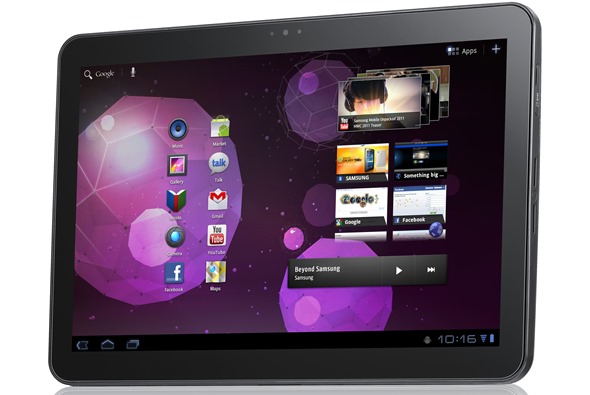With Apple said to be at the business end of producing the third installment to it’s iPad range, the question many analysts will be asking is, can rivals launch a serious challenge to the undisputed king of the tablet market?

It is, after all, a market which the fruit company is credited with founding back in March 2010 when the original iPad hit stores worldwide. For although portable internet/music/video players had been aplenty from the likes of Archos, they’d never managed to make much of a stir amongst consumers who couldn’t see the use for what was deemed a novelty product.
In those two short years since the first iPad, most of the big players in the consumer electronics industry have tried – and failed – with various attempts at an “iPad Killer”, nearly all of them being cheaper and more versatile than the closed-source iOS. Some of the more popular, such as the Galaxy Tab from Samsung or RIM’s BlackBerry Playbook have followed a similar form factor, yet have come nowhere close to the 40+ million selling device from the Cupertino company.

So how can the rivals change their approach in 2012 in order to let consumers know there are others out there? What is the winning formula, and how can it be emulated?
Battery life (or lack thereof) is a problem consumers face with many of their treasured gadgets. As much as the features of a tablet are important, it must also be able to hold enough juice for regular usage.
No matter how good a device may be, if the battery retention is sub-par, you’re probably going to look for something which works and plays as hard as you do. The likes of Samsung and Motorola must step their battery game up if they are to compete with the fruit company.
The quintessentially Apple design oozes finesse and class with that smooth metal finish. To me, picking up a shiny plastic-encased unit is an automatic off-put; it feels cheap and of poor quality, so I reckon designers should take (even more of) a leaf from Apple’s book and try to pack impressive specs inside a slick, nice-looking device. If any company is planning an “iPad Killer”, it absolutely must look the part and feel like, for lack of a better phrase, a decent bit of kit.
iOS is very popular indeed, and customer satisfaction rates are high across the entire iDevice range – largely due to Apple’s mobile operating system. There are well over half a million apps available at the App Store, and although the Android Market is gaining ground, the deficit is still 100,000+. Do apps run better on iOS? Some would say so, and if that’s the general consensus, then the hardware isn’t the only stumbling block for competitors. Personally, when using iOS, I find everything just slips into place and the experience is smoother than when using Android – it feels more ‘complete’. As a result, I do subscribe to the notion that if we woke up tomorrow and iOS was open-source, the iPad would be just another device as opposed to the holy grail.
Could it be that Google’s software that is holding tablet makers back, and manufacturers fighting a losing battle? In order for this to not be the case, one competitor needs to bring something with that ‘wow’ factor. The term iPad is used synonymously with tablet – one of the perks of revolutionizing a market – but if an alternative were to arrive and create a buzz (like the Kindle Fire, but with a decent product to back it up), then the power could quite easily shift.
So, what’s in the pipeline? Well there’s been rife speculation of Google’s supposed ‘Nexus’ tablet, which is rumored to be a scaled-down 7 inch offering priced low in order to compete with the Kindle Fire. To be fair, Amazon’s tablet effort doesn’t set the benchmark too high, so expect a decent amount of sales based on the name and manufacturer. We’d rate its chances of toppling the iPad as very low; in fact – we wouldn’t rate them at all. However, that number two spot could well be up for grabs as consumers look for a pick-me-up (pardon the pun) following the disappointment of the Kindle Fire.
We may have to wait for the next iteration of Android before a real assault can be launched to test Apple’s dominance. Jellybean is the next course in the tooth-rotting Android line-up, and although there hasn’t been much in terms of official spoken-word, there are plenty of currently-lacking features which could dramatically improve on Ice Cream Sandwich. Better power efficiency, a Lite option (for those unwilling to upgrade hardware every six months) and theming options could provide key avenues in the pursuit of success.
Is it a lost cause? Is iOS the main reason? Feel free to give me a tweet to channel your opinions and critiques @_benreid.
For discussion on this topic: Check out the threads on Facebook or Google+.
You can follow us on Twitter, add us to your circle on Google+ or like our Facebook page to keep yourself updated on all the latest from Microsoft, Google, Apple and the web.

